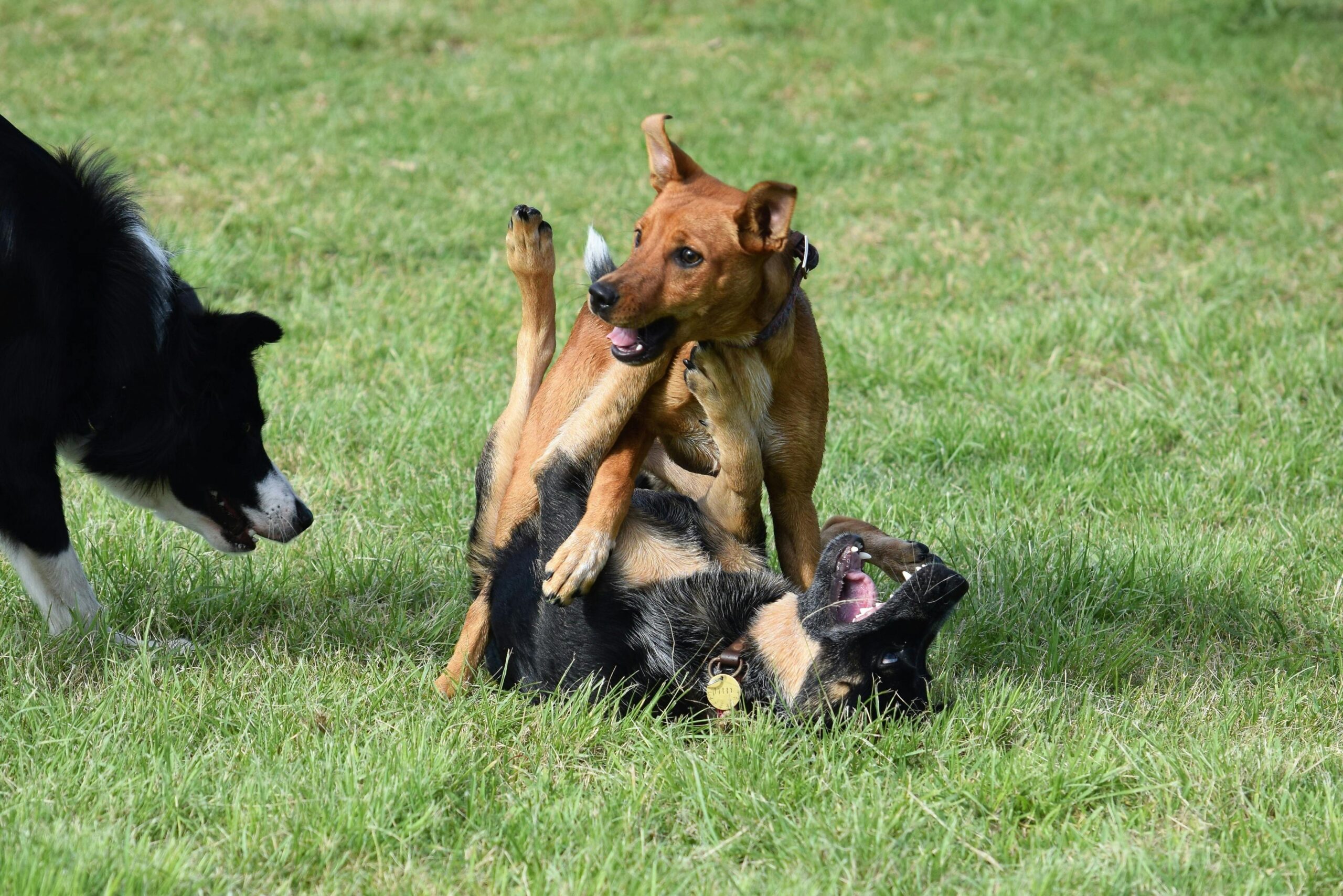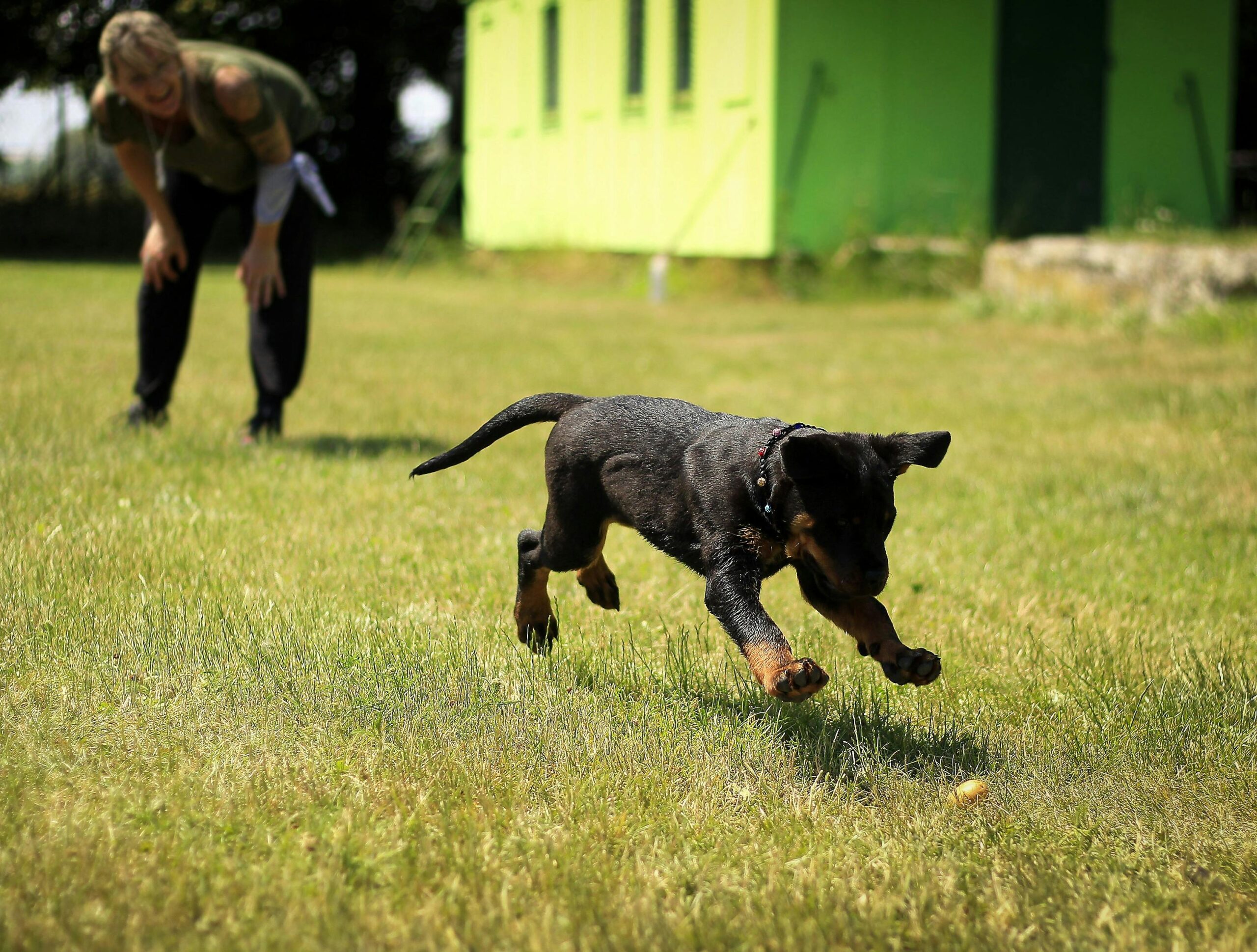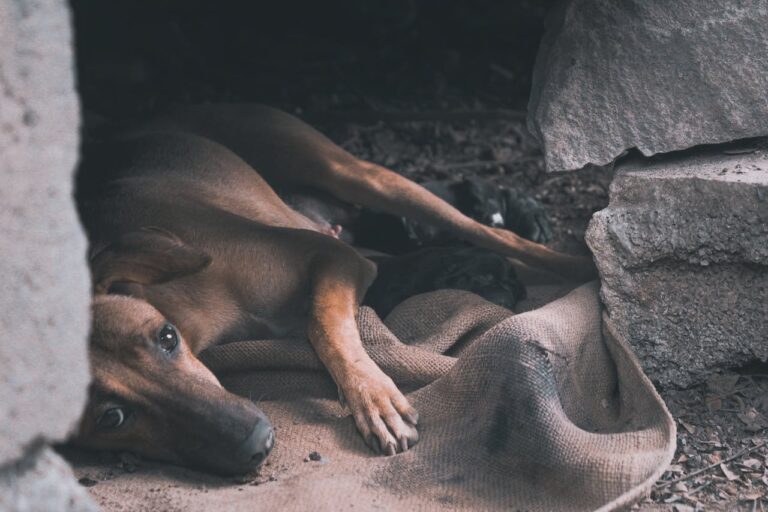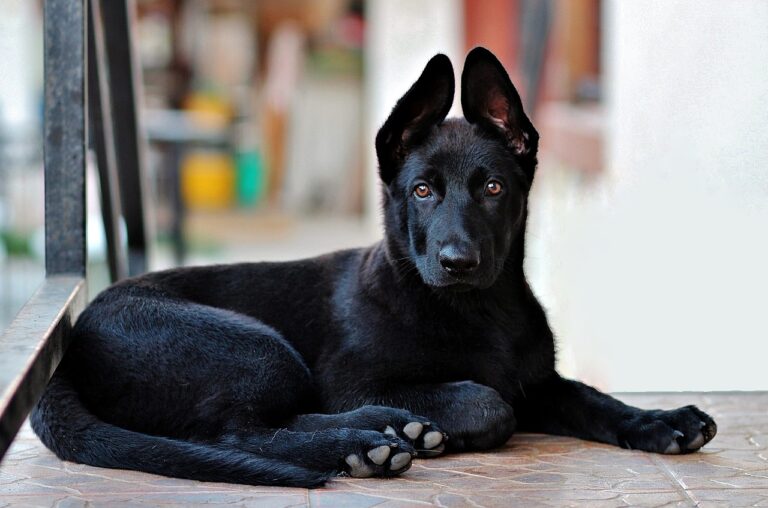
We have been covering puppy socialization in its broadness for a while now. We have seen the importance of socializing with your new puppy and how to socialize with other dogs, regardless of the breed and size. Today’s post will discuss building your puppy’s confidence around people through socialization.
Here are eight steps to help build your dog’s confidence around people through socialization.
- Start with familiar faces.
- Slowly expose your dog to a variety of people.
- Ensure interactions start and end positively.
- Enrol your puppy in training classes.
- Train in a controlled environment.
- Progress steadily.
- Be patient with your dog.
Now let us look at each step closely so that you can understand how these steps work and the best way to benefit from each one.
Table of Content
1. Start With Familiar Faces.
It is very important to start with familiar faces when socializing your dog with people for several reasons. Here are five reasons below why doing so will benefit your dog immensely and add to building an overall strong character in your dog.
- Familiarity and comfort: Introducing your dog to familiar faces allows them to feel more secure and comfortable during the initial stages of socialization.
Being around people they already know and trust helps build a positive foundation for further socialization experiences.
- Positive associations: Familiar faces are often associated with positive experiences and emotions for your dog.
They are more likely to approach and interact with people they are familiar with, which helps create positive associations with human interaction.
- Building confidence: Socialization can be overwhelming for some dogs, especially if they are naturally shy or cautious. Starting with familiar faces helps build your dog’s confidence gradually.
When they have positive experiences with people they know, they become more confident and open to meeting new people.
- Trust and bonding: Socialization with familiar faces strengthens the bond between your dog and the people they interact with regularly. It promotes trust as your dog learns that human interactions are enjoyable and safe.
This trust can extend to interactions with new people as your dog becomes more confident and familiar with socializing.
- Learning appropriate behaviour: Socializing with familiar faces allows your dog to learn and practice appropriate social behaviour.
They can learn to greet, interact, and communicate with different people in a safe and controlled environment. This foundation of good behaviour can be transferred to interactions with unfamiliar people later on.
We recommend using family members and close friends you can trust and are comfortable allowing your dog to mingle with.
This way, your dog gets to know all those in your close social circle that he can greet and interact with on an intimate level before teaching him those he can’t interact with that way.
2. Gradually expose your dog to various people
This stage is very important, so I have listed eight steps to help you get the most out of this very step. You must follow these steps closely.
- Start with familiar people: Introduce your dog to familiar faces like family and friends.
Allow your dog to interact with these individuals in a calm, controlled environment where they feel safe and comfortable.
- Expand to new acquaintances: Once your dog is comfortable with familiar people, gradually introduce them to new acquaintances.
This can include neighbours, co-workers, or friends you see less often. Choose individuals who are patient, calm, and willing to follow your instructions for positive interactions.
- Expose to different ages and genders: Dogs should be exposed to people of varying ages and genders to ensure they feel comfortable around various individuals.
This can include children, teenagers, adults, and seniors. Remember to supervise interactions with children to ensure they are gentle and respectful towards the dog.
- Vary appearances: Dogs benefit from being exposed to people with different appearances, including individuals wearing hats, glasses, and masks or using walking aids (e.g., canes or wheelchairs).
This helps your dog become accustomed to different visual stimuli and reduces the likelihood of fear or anxiety in unfamiliar situations.
- Controlled introductions: When introducing your dog to new people, it’s important to have control over the environment.
Choose a quiet and familiar space where distractions are minimized. Please keep your dog on a leash when vital and monitor their body language for signs of stress or discomfort.
- Use positive reinforcement: encourage your dog with treats, praise, and positive reinforcement for calm and appropriate behaviour during interactions.
This helps create positive associations with meeting new people and encourages desired behaviour. Avoid using punishment or force, which can create fear or negative associations.
- Gradual exposure and desensitization: Gradually increase exposure to different people over time.
Start with short and positive interactions, then gradually extend the duration and intensity as your dog becomes more comfortable. Ensure that the pace of exposure matches your dog’s comfort level.
- Practice in different environments: Dogs should be exposed to people in various environments to generalize their socialization skills.
Take your dog to different locations, such as parks, cafes, or pet-friendly stores. This helps them become comfortable with meeting people in different contexts.
3. Ensure Interactions Start and End positively.

You must ensure your puppy’s interactions with other dogs start and end on a high. This will determine the overall outcome of your training exercise and greatly impact your dog’s overall confidence level around people. Here are seven suggestions to help ensure you get this step right.
- Set up positive environments: Choose calm and controlled environments for socializing your puppy with people.
Avoid noisy or overwhelming locations that could cause stress or anxiety for your puppy. Create a comfortable and safe space for interactions to take place.
- Use positive reinforcement: Encourage positive behaviours from your puppy during interactions by using treats, praise, and rewards.
Reward your puppy when they approach people calmly, behaves appropriately, and exhibits positive social interactions. This helps reinforce desirable behaviour and creates positive associations with people.
- Educate and guide people: Communicate with the people your puppy interacts with and provide guidelines for positive interactions. Instruct them to approach your puppy calmly, avoid sudden movements, and be gentle.
Please encourage them to use treats or toys to engage your puppy positively. Educating people about your puppy’s needs and preferences helps promote a positive experience for both parties.
- Monitor body language: Closely to your puppy’s body language during interactions.
Observe signs of stress, fear, or discomfort, such as cowering, trembling, or attempts to hide. If you notice any signs of distress, intervene promptly and remove your puppy from the situation to prevent negative associations.
- Manage duration and intensity: Gradually increase the duration and intensity of interactions based on your puppy’s comfort level.
Start with short and positive interactions, and gradually extend the time as your puppy becomes more at ease. Avoid overwhelming your puppy with prolonged or intense interactions that may lead to stress or negative experiences.
- End on a positive note: Conclude each interaction with people positively. Encourage the person to say goodbye to your puppy gently and calmly.
Provide treats or rewards as a final positive reinforcement. Ending interactions positively helps your puppy associate people with pleasant experiences and reinforces positive socialization.
- Consider individual preferences: Every puppy is unique, and their comfort levels with people may vary. Respect your puppy’s preferences and boundaries.
Do not force interactions if your puppy shows discomfort or fear towards specific individuals. Gradually expose them to different people at a pace that suits their comfort level.
4. Enrol in Puppy Training Classes.
There are several reasons why we recommend enrolling in puppy training classes. But we are only going to consider six of those reasons below.
- Structured socialization opportunities: Puppy training classes provide structured and controlled environments for socializing your dog with other puppies and their owners.
This allows your dog to interact and play with other dogs in a supervised setting, promoting positive socialization experiences.
- Exposure to different dogs and people: In a training class, your dog will have the chance to interact with various dogs of different breeds, sizes, and temperaments.
This exposure helps your dog become more comfortable and adaptable around different types of dogs. Additionally, the presence of trainers and other class participants allows your dog to become accustomed to being around new people.
- Professional guidance: Trained instructors in puppy training classes can offer expert guidance on socialization techniques and best practices.
They can provide valuable insights into reading and interpreting dog body language, facilitating positive interactions, and addressing behavioural concerns. Their expertise can greatly enhance your socialization training efforts.
- Controlled and safe environment: Puppy training classes prioritize safety and ensure that dog interactions are well-managed.
Trainers can intervene if signs of fear, aggression, or discomfort arise, preventing negative experiences and promoting positive socialization. This controlled environment reduces the risk of incidents and fosters a positive learning atmosphere.
- Training exercises that promote social skills: Puppy training classes often include exercises that promote social skills and appropriate behaviour.
This can include exercises like controlled greetings, supervised play sessions, and group activities that encourage dogs to interact and positively communicate with each other.
These exercises help develop your dog’s social skills and manners around other dogs.
- Supportive community: Enrolling in puppy training classes provides an opportunity to communicate with other dog owners who are going through similar experiences.
Sharing experiences, tips, and challenges with fellow participants can offer support and create a sense of community. This network can be valuable for ongoing socialization efforts beyond the training classes.
5. Always Train in a Controlled Environment.

Training your puppy in a controlled environment means creating a structured, predictable setting where distractions and potential risks are minimized. In a controlled environment, you have more influence over the training process, allowing you to teach your puppy desired behaviours and skills effectively.
Here are seven characteristics of a controlled training environment:
- Limited distractions: Choose a quiet and relatively distraction-free space for training sessions.
This helps your puppy stay focused and reduces the likelihood of interruptions or competing stimuli that could hinder their learning.
- Safety measures: Ensure that the training area is safe for your puppy. Remove any hazards or objects that could pose a risk to their well-being.
This includes securing loose wires, blocking off stairs or dangerous areas, and removing toxic substances.
- Consistency: Maintain consistency in your training environment using the same location for training sessions.
This familiarity helps your puppy associate the environment with training and learning, facilitating their understanding and cooperation.
- Containment or confinement: If necessary, use physical barriers or tools such as crates, gates, or leashes to create boundaries and limit your puppy’s movement during training.
This containment provides focus and prevents them from wandering off or getting into trouble.
- Controlled interactions: Carefully manage interactions with people and other animals during training.
This can involve controlled introductions, gradual exposure, and positive reinforcement to help your puppy learn appropriate behaviour and social skills.
- Distraction management: Gradually introduce distractions as your puppy progresses in their training.
Start with minimal distractions and gradually increase the level of challenge. This gradual approach helps your puppy build their focus and impulse control.
- Positive reinforcement: Use positive reinforcement techniques, such as treats, praise, and rewards, to motivate and reward your puppy for desired behaviours. This positive feedback encourages them to repeat the behaviours you want to reinforce.
6. Progress Steadily.
When taking your puppy to be social, it is important to progress steadily for several reasons. Here are three reasons to be slow and steady during socialization training.
- Building a strong foundation: Taking the time to progress slowly allows your puppy to develop a solid foundation of positive experiences and associations with various social situations. By gradually introducing them to new people, animals, and environments, you can build their confidence, trust, and social skills in a controlled and positive manner. This foundation sets them up for success in future social interactions.
- Preventing fear and anxiety: Rushing the socialization process can lead to fear and anxiety in puppies. Exposing them too quickly to overwhelming or frightening experiences can harm their emotional well-being and behaviour. By taking it slow, you allow your puppy to adjust and adapt at their own pace, reducing the risk of fear-related issues in the future.
- Avoiding setbacks and negative associations: Pushing your puppy too quickly into challenging social situations can result in setbacks and negative associations. If they have a negative experience, it may take longer to rebuild their confidence and trust. By proceeding gradually, you minimize the likelihood of setbacks, ensuring that each socialization experience remains positive and enjoyable for your puppy.
7. Be Patient With Your Puppy.
So when you engage in socialization training, it is important to ensure you are more concerned about your dog’s needs and not your own. Having a realistic expectation of your dog’s abilities is also important. It will help you stay calm when their training is not moving as fast as you would like. It will also help you to remain patient, knowing that socializing your puppy is a more long-term project and not something of the moment. The patient is an important skill if you must help your dog be as friendly as possible.
Final Thoughts.
Building your puppy’s confidence around people through socialization training is not easy; It involves being realistic, patient, and skilful. We hope this post is very successful in helping you develop those traits. But what if your dog is confident around humans but less around other dogs? Here is one of our latest articles on building your dog’s confidence around other dogs. We hope you find the information helpful.



